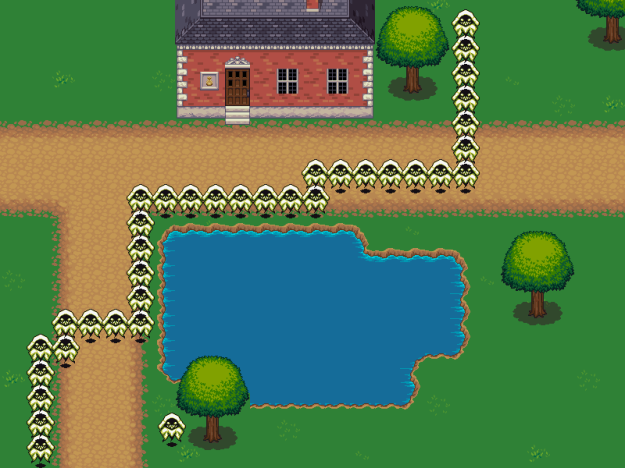It’s been a slow start, but hopefully things will start to move a bit faster. I am on vacation for the week and I have managed to get some work done.
I spent several days trying to figure out the best way to represent Actors on the world maps where the player can walk around. The Actors walk one tile at a time, fitting to the grid, rather than having “free” movement where Actors can move by any increment. It is much easier to implement free movement (which is what I’ve done in the past) than tile movement. I re-wrote the code that handles all of this several times before I found an implementation that was clean and functional enough.
In this screenshot there are several randomly spawned Actors that have walked to random places on the map. They do this by using the A* pathfinding algorithm I talked about in the previous post. There is an Action class that actually performs the walking animation. This Action is smart enough to re-route upon collision with another Actor.
The player can touch/click on a map tile to walk a path to it. For desktop users or certain Android devices, the D-pad can also be used to move the player around on a tile-by-tile basis.
I have also started work on an interaction and dialog system. In the screenshot, the text box shown is a result of the player interacting with the sign on the building. Right now the text box only displays one string of text, multiple strings and maybe even branching dialog paths still need to be done. Item chests are on the to-do list as well. Hopefully I can get them done soon.
From the blog David Thompson » WSU CS by davexunit and used with permission of the author. All other rights reserved by the author.


